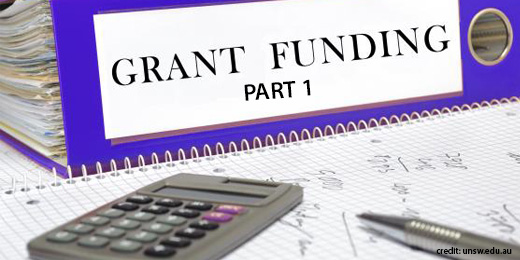Robotics research wouldn’t be where it is today without funding programs and grants that make the progress possible. To help you with your next grant application, we’ve put a 2-part series blog post together to outline top tips and reminders. At the bottom of each post, we’ve also included a couple key sources that provide grant programs specific to the robotics industry.
At any time, feel free to contact our grant-writing specialists who can provide you with additional tips and content that will help you fill in the blanks!
Now, to provide you with the top 10 tips for grant writing:
1. Are you Eligible?
Eligibility requirements can be lengthy and somewhat dry, but review them anyway! If you have questions, ask! Eligibility is non-negotiable, and not satisfying the requirements will disqualify your application immediately.
2. Make Sure you have the Time
Grant writing requires in-depth details about the project, and can take a long time to complete. Review the requirements and milestone deadlines of the grant before you start writing; you don’t want to dedicate time and effort to a project that you won’t have the time to finish. Due dates creep up quickly!
3. Follow Instructions EXACTLY
Picture a grant evaluator with a checklist in hand as they review your application. They want to see that you have content for every section requested. Part of the checklist will ensure that you have handed in materials on the dates required and in the recommended format. Keep in mind, many organizations ask for a proposal or letter of intent prior to the actual grant application, so that may come before submitting all of your materials.
4. Establish a Contact
Make every effort to establish a contact at the granting organization. This relationship will help you learn about the organization and give you a better idea of how to cater your grant application to meet the expectations of the organization. Give them a call, ask them a question (even if you already know the answer). Establishing a contact at the granting organization usually proves to be a beneficial relationship.
5. Know your Audience
Grants come in all shapes and sizes. Know whom you are writing to and what they want to hear. Grants are typically awarded on the basis of one or two key foundations: merit or need.
– Merit: Write about your accomplishments and the value you have provided to the community. Explain why you deserve this grant using specific examples and descriptions, making the reader feel emotionally connected to your project. Testimonials from stakeholders can be used as a great tool here.
– Need: The evaluator wants to read the facts. Why is this money pivotal for your project? What will you be able to do with the money? How will it impact others? Use numbers and statistics to illustrate your answers; they will likely be required and they’ll also help to provide a persuasive approach to the key messaging in your application.
Do your homework and make sure you understand the purpose for the grant AND organization providing the grant. Align your application with the grant initiative and create a connection to the goals of the organization as whole (for example, what are it’s core values and how does your project relate?). Incorporating these details as a foundation of your piece will make your application a very attractive package.
Sources for grant announcements
Stay tuned for our next blog article to outline the remaining 6-10 tips on grant writing. In the meantime, the following grant sources:
– The National Science Foundation provides the ‘Partnerships for Innovation: Building Innovation Capacity’ grant, and the ‘Graduate Research Fellowship Program (GRFP)’.
– Grants.gov helps to streamline grant opportunities by posting a variety of grant and funding programs relating to a diversity of disciplines.
– The Community Research and Development Information Service (CORDIS) covers research, innovation and policies in robotic technologies for industrial and service applications.




